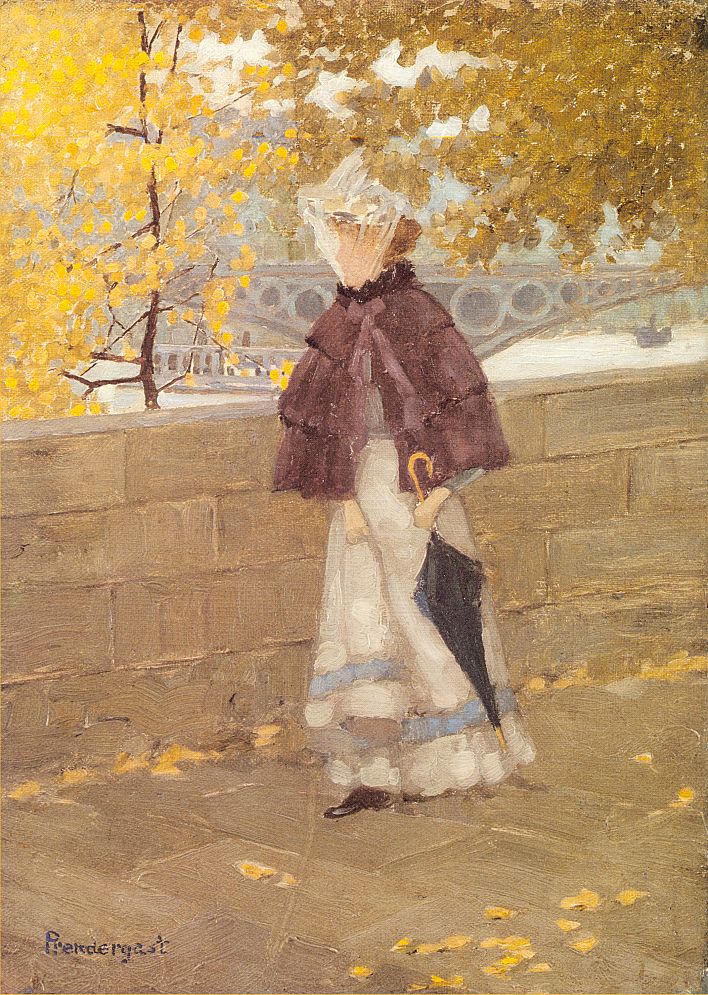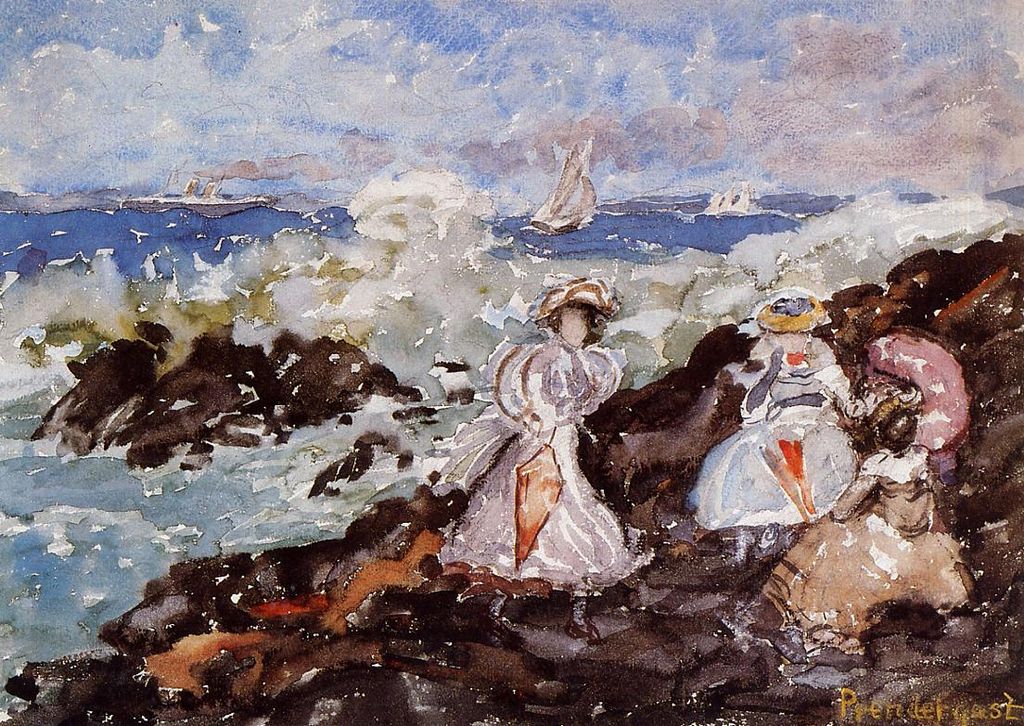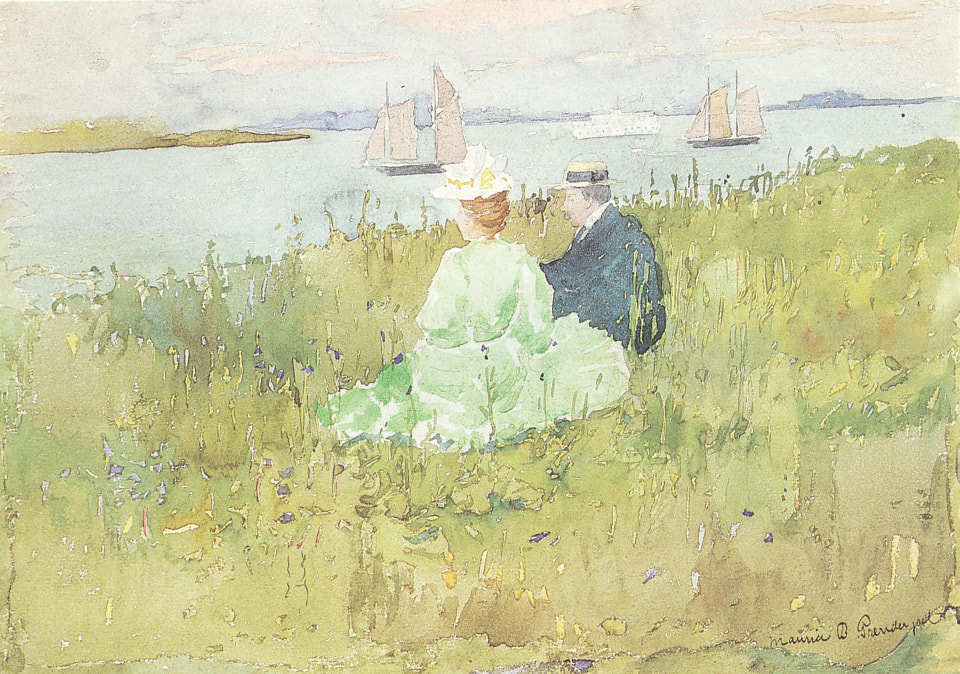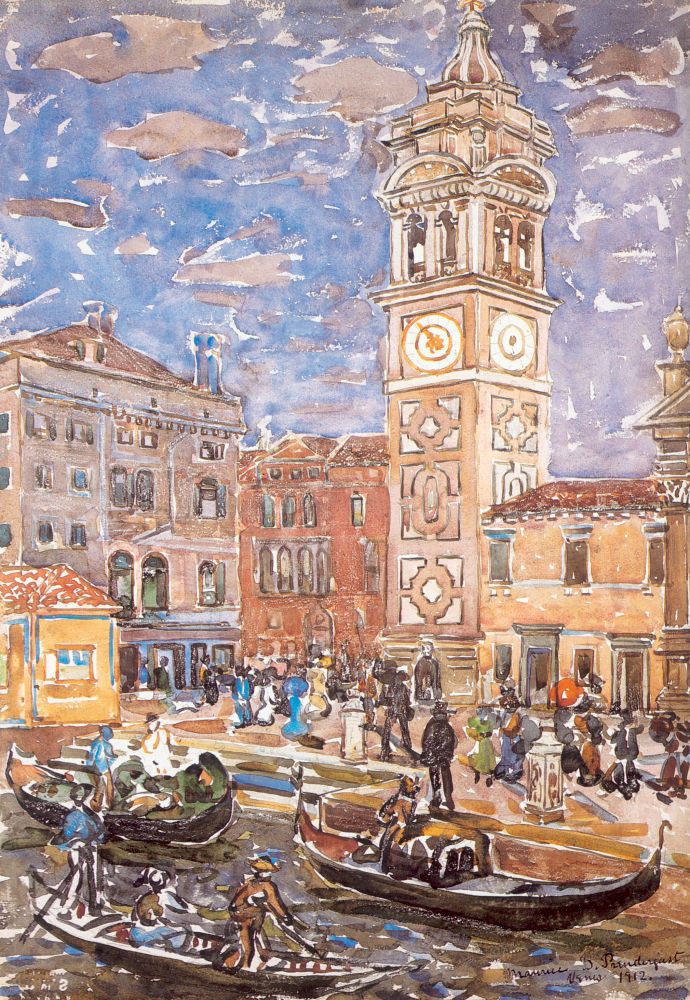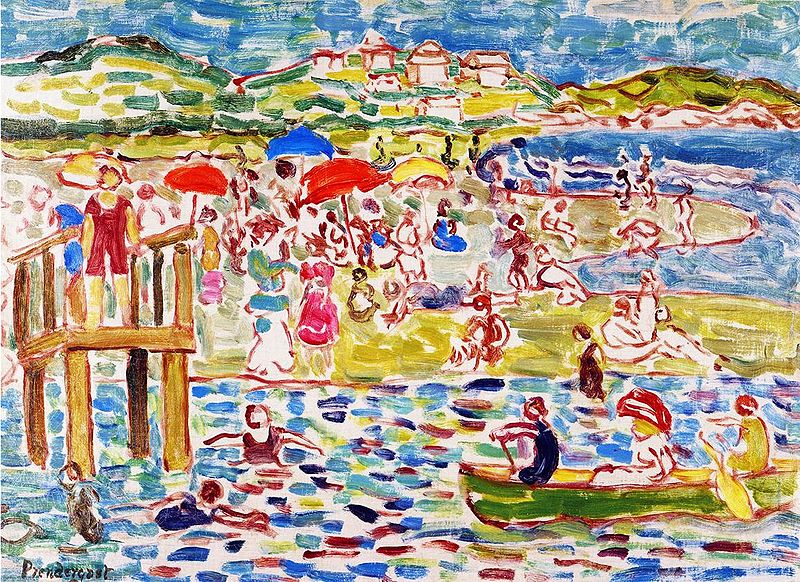An Appreciation: Maurice PrendergastMaurice Prendergast was a Post-Impressionist American artist. Although influenced by the French Post-Impressionists, Prendergast developed his own unique style, which helped to bring Modern Art to America.
Maurice was born on October 10, 1858, where his Canadian father operated a trading post. After the failure of the trading post, the family moved to his mother's hometown Boston, Massachusetts. There were five children in the family. However, as often happened in those days, not all reached adulthood. Maurice's twin sister Lucy, died when Maurice was in his teens. Another sister was still-born and his brother Richard also died when he as a child. As a result, Maurice became very close to his younger brother Charles with whom he would live most of his life. Maurice attended school through the eighth grade and then went to work in a dry goods store. In the evenings, he would study mechanical drawing and attended free art classes. Eventually, he was apprenticed to a commercial artist with whom he helped in making cards and advertisements for shops. In 1891, Maurice and Charles traveled to Europe. They stopped in England but spent most of their time in France. Paris was the art capital of the world and Maurice studied at Atlier Colorossi and at the Academie Julian. The city was also in the throes of an artistic revolution and Maurice became acquainted with the young Post-Impressionist artists including Edouard Vuillard, Piere Bonnard and Henri Toulouse Latrec. He also attended exhibitions of the work of Vincent Van Gogh and Georges Seurat. Through the Canadian artist James Wilson Morrice, he was introduced to the work of British artiists Walter Sickert, Aubrey Beardsley and the ex-patriate American James McNeill Whistler. All of this combined to influence Prendergast's style. Working primarily in water colors, his work featured loosely drawn images with bright colors. Like Japanese wood block prints. His, which were very popular among Parisian artists at the time, Prendergast's scenes were often on a flat plane. Like several of the Impressionists and Post-Impressionists, Prendergast's favorite subject was people pursuing leisure activities such as scenes of parks and beaches. In 1894, the brothers returned to Boston. Maurice exhibited his works not only in Boston but in Chicago and New York. Charles, who was also an artist, helped out by becoming a successful frame-maker. Collectors who came to Charles looking for a frame were also introduced to the brothers' art work. One prominent collector, Sara Choate Sears, sponsored a trip to Italy for Maurice. (During his career, Maurice would benefit from the patronage of a number of collectors). During his 18 months in Italy, Maurice was particularly impressed by Venice and painted a series of watercolors there. These works were featured in Maurice's first major one-man show in New York City in 1900. Around 1904, Maurice became loosely affiliated with a group of artists known as “The Eight.” Led by Robert Henri and including Maurice's friend William Glacken, The Eight came together in protest of the exhibition policies of the conservative National Academy of Design. Although stylistically and in their choice of subject matter, the other seven artists (some of whom would go on to become members of the Ashcan School) were quite different than Prendergast, Maurice joined with them because he favored non- juried, open exhibitions. Maurice would go on to exhibit at The Eight's only official exhibition in 1908. Before that, however, Maurice returned to Paris. There, he was profoundly influenced by the new work of Paul Cezanne and Henri Matisse. This caused Maurice to change his style. While still figurative, his work became even looser more abstract. During this period, Maurice was losing his hearing and tried several treatments but all were to no avail. In 1912, Maurice joined the Association of American Painters and Sculptors and served on the selection committee for the exhibition the Association was planning to hold at the Armory in New York the next year. The Armory Show is considered a landmark in the history of Modern Art as it included Modernist works by European artists, thus serving to introduce Modern Art to America. Prendergast was the only American artist working in the avant garde European style and so the seven works he showed were attacked by the critics in the same way as the works of the European artists. However, they helped to pen the door for Modernism in America. The brothers Prendergast settled in New York City in 1914. Collectors continued to demand Maurice's work and he continued to exhibit despite declining health. Maurice died in 1924 of prostate cancer. |
Two of Prendergast's favorite themes: People in Parks ("Along The Seine")(above); and People by the Sea ("Surf")(below).
Above: "Watching The Ships".
Above: Prendergast found inspiration in Venice. ("Santa Maria Formosa").
Below: On a trip to Paris in 1907, Prendergast's style was influenced by Henri Matisse. "The Bathers." |
Artist appreciation -Maurice Prendergast
